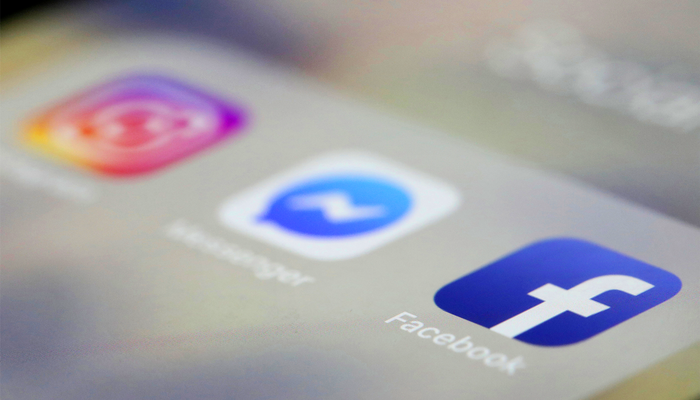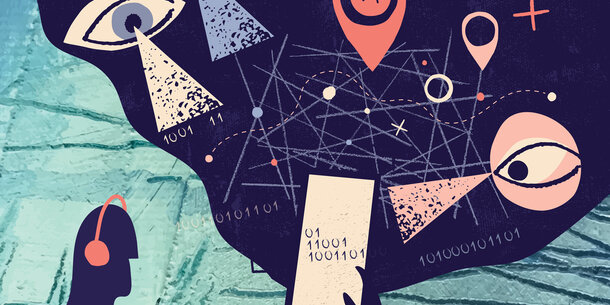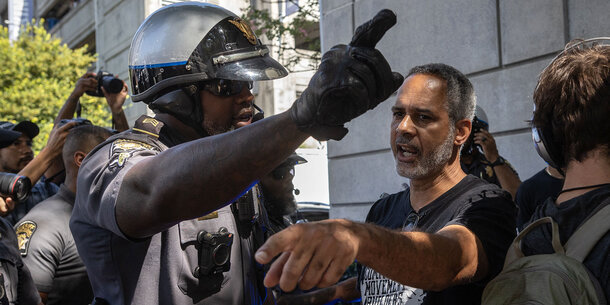Introduction
Social media is a powerful tool for connection and civic involvement, serving myriad purposes. It facilitates community-building, connecting like-minded people and fostering alliance development, including on sensitive or controversial topics; it helps grassroots movements find financial and other support; it promotes political education; it assists civic organizations in organizing and magnifying the reach of offline efforts; it elevates nonmainstream narratives; it encourages artistic expression; and more.footnote1_08lc4fMVPYBjRUeHfHnF-4spitzW6REi03TEE1CBfc_zuNcVZTNbv6q1 See, e.g., Marcia Mundt, Karen Ross, and Charla M. Burnett, “Scaling Social Movements Through Social Media: The Case of Black Lives Matter,” Social Media + Society 4, no. 4 (October–December 2018): 1–14, https://journals.sagepub.com/doi/epub/10.1177/2056305118807911; Jane Hu, “The Second Act of Social-Media Activism,” New Yorker, August 3, 2020, https://www.newyorker.com/culture/cultural-comment/the-second-act-of-social-media-activism; and Shira Ovide, “How Social Media Has Changed Civil Rights Protests,” New York Times, updated December 17, 2020, https://www.nytimes.com/2020/06/18/technology/social-media-protests.html.
Users of color benefit especially from social media’s wide-ranging applications. Black and Hispanic users of X (formerly Twitter) have leveraged that platform to spur political engagement and give voice to underrepresented groups.footnote2_dD1S40pmC43LPzHwnrKBTlucURcAwS6WaEpaxd6f0aE_jtUU0ymuIf4f2 Black Twitter and Hispanic Twitter (like Asian American Twitter and Feminist Twitter) are monikers coined for the space on Twitter (now X) in which people “discuss issues of concern to themselves and their communities — issues they say either are not covered by mainstream media, or are not covered with the appropriate cultural context.” Deen Freelon et al., How Black Twitter and Other Social Media Communities Interact with Mainstream News, Knight Foundation, February 27, 2018, 38–39, https://knightfoundation.org/wp-content/uploads/2018/02/Marginalized-Twitter-v5.pdf. See also Brooke Auxier, “Social Media Continue to Be Important Political Outlets for Black Americans,” Pew Research Center, December 11, 2020, https://www.pewresearch.org/short-reads/. 2020/12/11/social-media-continue-to-be-important-political-outlets-for-black-americans. College students of color have used social media to share stories about inequitable or traumatic treatment at predominantly white colleges and universities.footnote3_rHXjj1eB7DhsxyIwDq-JOXt5O0Bg-XGhjEP2-uzSgg_dztDrMuPIgcR3 Christian Peña, “How Social Media Is Helping Students of Color Speak Out About Racism on Campus,” PBS NewsHour, September 8, 2020, https://www.pbs.org/newshour/education/how-social-media-is-helping-students-of-color-speak-out-about-racism-on-campus; and Dominique Skye McDaniel, “As Digital Activists, Teens of Color Turn to Social Media to Fight for a More Just World,” Conversation, April 20, 2023, https://theconversation.com/as-digital-activists-teens-of-color-turn-to-social-media-to-fight-for-a-more-just-world-201841. And “Black Twitter” in particular has a record of pushing the national media to cover overlooked stories.footnote4_T6Gtn8kVvH8IA7zKiw8zEFAFNV0gX3gCmcGZ40xhhY_ojSLfbhxJVUf4 Freelon et al., How Black Twitter and Other Social Media Communities Interact, 46–47. See also Auxier, “Social Media Continue to Be Important Political Outlets”; Brooke Auxier, “Activism on Social Media Varies by Race and Ethnicity, Age, Political Party,” Pew Research Center, July 13, 2020, https://www.pewresearch.org/short-reads/2020/07/13/activism-on-social-media-varies-by-race-and-ethnicity-age-political-party; and University of Kansas, “Social Media Use Increases Latino Political Participation,” news release, November 5, 2018, https://news.ku.edu/2018/11/02/social-media-use-increases-latino-political-participation. Research shows that young people of color are the demographic group most likely to turn to social media both to consume news and to amplify their own political involvement.footnote5_rhBHE3J1PB28qWVRyvRi6GgsXaWr2FJy1TmM-Xzl7g0_cJTq2tTzPAcX5 Matthew D. Luttig and Cathy J. Cohen, “How Social Media Helps Young People — Especially Minorities and the Poor — Get Politically Engaged,” Washington Post, September 9, 2016, https://www.washingtonpost.com/news/monkey-cage/wp/2016/09/09/how-social-media-helps-young-people-especially-minorities-and-the-poor-get-politically-engaged; Auxier, “Social Media Continue to Be Important Political Outlets”; and Auxier, “Activism on Social Media Varies by Race and Ethnicity, Age, Political Party.” As the Supreme Court has recognized, online platforms “can provide perhaps the most powerful mechanisms available to a private citizen to make his or her voice heard.”footnote6_ZtzMy15TmHvEVaAq3uSRjDV4kNeYbevC2HTW8a0ibI0_apEFwiYEh8RB6 Packingham v. North Carolina, 582 U.S. 98, 107 (2017).
This far-reaching use makes social media an attractive source of information and intelligence for law enforcement. Officers can easily view publicly available information online and follow individuals and hashtags, often without even needing an account. They can also create undercover accounts to join online groups, monitor activity anonymously, or connect directly with individuals — with the attendant risks described below. Social media can provide evidence of criminal activity, from white-collar crime to inciting violence to drug and firearm offenses. It can also be used to commit crimes, such as stalking, harassment, and child sexual exploitation. footnote7_CQB4psXQYOKtr2ghu1hO4LyDBICBKl0DJBzqTp7LX0_uHUInTEQF5Lf7 See LexisNexis Risk Solutions, Social Media Use in Law Enforcement: Crime Prevention and Investigative Activities Continue to Drive Usage, November 2014, https://centerforimprovinginvestigations.org/wp-content/uploads/2018/11/2014-social-media-use-in-law-enforcement-pdf.pdf (documenting multiple use cases of police use of social media).
Many law enforcement agencies contract with software vendors that offer proprietary, opaque computer algorithms to collect and analyze massive amounts of data. These algorithms supply agencies with running reports of social media posts on topics, groups, and individuals of interest, allowing law enforcement to analyze associations, and even discern viewpoints. Such tools facilitate the monitoring, collection, and analysis of data far more quickly and cheaply than any individual officer could accomplish, implicating the Supreme Court’s recognition that a “central aim” of the Constitution’s drafters was “to place obstacles in the way of a too permeating police surveillance.”footnote8_B0GJdUNh-GcUJ3-GI2XpImVDOpHUVKSpq3Gv2aR14o_zPux1PtzMXBZ8 Carpenter v. U.S., 138 S. Ct. 2206, 2214 (2018) (quoting U.S. v. Di Re, 332 U.S. 581, 595 (1948)) (internal quotation marks omitted). See also Rachel Levinson-Waldman, “Government Access to and Manipulation of Social Media: Legal and Policy Challenges,” Howard Law Journal 61, no. 3 (2018): 523–62, https://www.brennancenter.org/sites/default/files/publications/images/RLW_HowardLJ_Article.pdf.
In some circumstances, targeted social media use can be both appropriate and productive. As the Brennan Center has noted in the context of the FBI, “public social media posts that express specific and credible threats, when brought to the FBI’s attention, can by themselves be all the evidence necessary to justify opening a preliminary or full investigation, as would any other source of information indicating that a crime is taking place or in the works. Likewise, once the FBI opens a properly predicated investigation, agents may logically conclude that monitoring and recording public or private social media posts would be a fruitful investigative step to gather the evidence necessary for a prosecution.”footnote9_XLJHCqWXEXYiWmWVSTGtGW77b6hmVOldqY13B4hDkdI_lYYKqVgx0BOw9 Michael German and Kaylana Mueller-Hsia, Focusing the FBI: A Proposal for Reform, Brennan Center for Justice, July 28, 2022, 7, https://www.brennancenter.org/our-work/research-reports/focusing-fbi.
When there are no less intrusive means available and when its use is properly limited and narrowly scoped, social media can also help augment preparation for public events, as set out below.
But unbounded social media use by law enforcement can cause considerable harm. As the White House Office of Science and Technology Policy recently recognized, “unchecked social media data collection has been used to threaten people’s opportunities, undermine their privacy, or pervasively track their activity — often without their knowledge or consent.”footnote10_0wPFkSuVkq2Dblzp9cY79zDkY7MY-iw—ZeG69wzFsg_yQEhcgwDlE5i10 Office of Science and Technology Policy, Blueprint for an AI Bill of Rights: Making Automated Systems Work for the American People, White House, October 2022, 3, https://www.whitehouse.gov/wp-content/uploads/2022/10/Blueprint-for-an-AI-Bill-of-Rights.pdf. These threats include incursions into constitutionally protected speech and association, disproportionate focus on and repercussions for marginalized communities, and overcollection of irrelevant information. The Department of Justice has advised that even publicly available social media data should not be collected or used indiscriminately by law enforcement.footnote11_-Ym4RU7XzL6T5S2rRrsFqNCdDv0zvE0UJ-EgzrNvudY_vsA6f9asukUV11 Global Advisory Committee, Developing a Policy on the Use of Social Media in Intelligence and Investigative Activities: Guidance and Recommendations, Office of Justice Programs, Department of Justice, February 2013, 6, https://bja.ojp.gov/sites/g/files/xyckuh186/files/media/document/developing_a_policy_on_the_use_of_social_media_in_intelligence_and_inves.pdf.
Moreover, although the issue is understudied, little empirical evidence supports the value of broadscale social media monitoring,footnote12_mgPE1Q8jQFrtsDUD7dY1cmJzrI12xxuAR2uVScsOA8_zjutsE8aYxlC12 See German and Mueller-Hsia, Focusing the FBI, 6 (“No one could reasonably suggest that having the FBI employ a team of agents to collect, digitize, and scour for vague indicators of wrongdoing every book, newspaper, magazine, newsletter, press release, and broadcast interview, song, poem, or speech published would be an effective or cost-efficient way to prevent crime or terrorism, especially given that more than half of the violent crime in the U.S. goes unsolved every year. The same holds true for social media.”). and government officials have expressed skepticism about the efficacy of the practice. A 2021 internal review by the Department of Homeland Security Office of the General Counsel, for instance, observed that agents trying to predict threats by collecting social media and other open-source data often instead gathered information on “a broad range of general threats,” ultimately yielding “information of limited value” that included “memes, hyperbole, statements on political organizations and other protected First Amendment speech.”footnote13_VKa9ZtjSa5yZ9q0uq3Cw2mTn6Nan0vPF4ZxXP8Uvmw_rJtqTwrJzzip13 Office of the General Counsel, Report on DHS Administrative Review into I&A Open Source Collection and Dissemination Activities During Civil Unrest: Portland, Oregon, June through July 2020, Department of Homeland Security, January 6, 2021, 22, 27, http://cdn.cnn.com/cnn/2021/images/10/01/internal.review.report.20210930.pdf.
This explainer sets out the major risks inherent to law enforcement’s use of social media and then outlines proposed best practices. It aims to contribute to the development of policies that clarify and build appropriate guardrails around social media use by law enforcement.
End Notes
-
footnote1_08lc4fMVPYBjRUeHfHnF-4spitzW6REi03TEE1CBfc_zuNcVZTNbv6q
1
See, e.g., Marcia Mundt, Karen Ross, and Charla M. Burnett, “Scaling Social Movements Through Social Media: The Case of Black Lives Matter,” Social Media + Society 4, no. 4 (October–December 2018): 1–14, https://journals.sagepub.com/doi/epub/10.1177/2056305118807911; Jane Hu, “The Second Act of Social-Media Activism,” New Yorker, August 3, 2020, https://www.newyorker.com/culture/cultural-comment/the-second-act-of-social-media-activism; and Shira Ovide, “How Social Media Has Changed Civil Rights Protests,” New York Times, updated December 17, 2020, https://www.nytimes.com/2020/06/18/technology/social-media-protests.html. -
footnote2_dD1S40pmC43LPzHwnrKBTlucURcAwS6WaEpaxd6f0aE_jtUU0ymuIf4f
2
Black Twitter and Hispanic Twitter (like Asian American Twitter and Feminist Twitter) are monikers coined for the space on Twitter (now X) in which people “discuss issues of concern to themselves and their communities — issues they say either are not covered by mainstream media, or are not covered with the appropriate cultural context.” Deen Freelon et al., How Black Twitter and Other Social Media Communities Interact with Mainstream News, Knight Foundation, February 27, 2018, 38–39, https://knightfoundation.org/wp-content/uploads/2018/02/Marginalized-Twitter-v5.pdf. See also Brooke Auxier, “Social Media Continue to Be Important Political Outlets for Black Americans,” Pew Research Center, December 11, 2020, https://www.pewresearch.org/short-reads/. 2020/12/11/social-media-continue-to-be-important-political-outlets-for-black-americans. -
footnote3_rHXjj1eB7DhsxyIwDq-JOXt5O0Bg-XGhjEP2-uzSgg_dztDrMuPIgcR
3
Christian Peña, “How Social Media Is Helping Students of Color Speak Out About Racism on Campus,” PBS NewsHour, September 8, 2020, https://www.pbs.org/newshour/education/how-social-media-is-helping-students-of-color-speak-out-about-racism-on-campus; and Dominique Skye McDaniel, “As Digital Activists, Teens of Color Turn to Social Media to Fight for a More Just World,” Conversation, April 20, 2023, https://theconversation.com/as-digital-activists-teens-of-color-turn-to-social-media-to-fight-for-a-more-just-world-201841. -
footnote4_T6Gtn8kVvH8IA7zKiw8zEFAFNV0gX3gCmcGZ40xhhY_ojSLfbhxJVUf
4
Freelon et al., How Black Twitter and Other Social Media Communities Interact, 46–47. See also Auxier, “Social Media Continue to Be Important Political Outlets”; Brooke Auxier, “Activism on Social Media Varies by Race and Ethnicity, Age, Political Party,” Pew Research Center, July 13, 2020, https://www.pewresearch.org/short-reads/2020/07/13/activism-on-social-media-varies-by-race-and-ethnicity-age-political-party; and University of Kansas, “Social Media Use Increases Latino Political Participation,” news release, November 5, 2018, https://news.ku.edu/2018/11/02/social-media-use-increases-latino-political-participation. -
footnote5_rhBHE3J1PB28qWVRyvRi6GgsXaWr2FJy1TmM-Xzl7g0_cJTq2tTzPAcX
5
Matthew D. Luttig and Cathy J. Cohen, “How Social Media Helps Young People — Especially Minorities and the Poor — Get Politically Engaged,” Washington Post, September 9, 2016, https://www.washingtonpost.com/news/monkey-cage/wp/2016/09/09/how-social-media-helps-young-people-especially-minorities-and-the-poor-get-politically-engaged; Auxier, “Social Media Continue to Be Important Political Outlets”; and Auxier, “Activism on Social Media Varies by Race and Ethnicity, Age, Political Party.” -
footnote6_ZtzMy15TmHvEVaAq3uSRjDV4kNeYbevC2HTW8a0ibI0_apEFwiYEh8RB
6
Packingham v. North Carolina, 582 U.S. 98, 107 (2017). -
footnote7_CQB4psXQYOKtr2ghu1hO4LyDBICBKl0DJBzqTp7LX0_uHUInTEQF5Lf
7
See LexisNexis Risk Solutions, Social Media Use in Law Enforcement: Crime Prevention and Investigative Activities Continue to Drive Usage, November 2014, https://centerforimprovinginvestigations.org/wp-content/uploads/2018/11/2014-social-media-use-in-law-enforcement-pdf.pdf (documenting multiple use cases of police use of social media). -
footnote8_B0GJdUNh-GcUJ3-GI2XpImVDOpHUVKSpq3Gv2aR14o_zPux1PtzMXBZ
8
Carpenter v. U.S., 138 S. Ct. 2206, 2214 (2018) (quoting U.S. v. Di Re, 332 U.S. 581, 595 (1948)) (internal quotation marks omitted). See also Rachel Levinson-Waldman, “Government Access to and Manipulation of Social Media: Legal and Policy Challenges,” Howard Law Journal 61, no. 3 (2018): 523–62, https://www.brennancenter.org/sites/default/files/publications/images/RLW_HowardLJ_Article.pdf. -
footnote9_XLJHCqWXEXYiWmWVSTGtGW77b6hmVOldqY13B4hDkdI_lYYKqVgx0BOw
9
Michael German and Kaylana Mueller-Hsia, Focusing the FBI: A Proposal for Reform, Brennan Center for Justice, July 28, 2022, 7, https://www.brennancenter.org/our-work/research-reports/focusing-fbi. -
footnote10_0wPFkSuVkq2Dblzp9cY79zDkY7MY-iw—ZeG69wzFsg_yQEhcgwDlE5i
10
Office of Science and Technology Policy, Blueprint for an AI Bill of Rights: Making Automated Systems Work for the American People, White House, October 2022, 3, https://www.whitehouse.gov/wp-content/uploads/2022/10/Blueprint-for-an-AI-Bill-of-Rights.pdf. -
footnote11_-Ym4RU7XzL6T5S2rRrsFqNCdDv0zvE0UJ-EgzrNvudY_vsA6f9asukUV
11
Global Advisory Committee, Developing a Policy on the Use of Social Media in Intelligence and Investigative Activities: Guidance and Recommendations, Office of Justice Programs, Department of Justice, February 2013, 6, https://bja.ojp.gov/sites/g/files/xyckuh186/files/media/document/developing_a_policy_on_the_use_of_social_media_in_intelligence_and_inves.pdf. -
footnote12_mgPE1Q8jQFrtsDUD7dY1cmJzrI12xxuAR2uVScsOA8_zjutsE8aYxlC
12
See German and Mueller-Hsia, Focusing the FBI, 6 (“No one could reasonably suggest that having the FBI employ a team of agents to collect, digitize, and scour for vague indicators of wrongdoing every book, newspaper, magazine, newsletter, press release, and broadcast interview, song, poem, or speech published would be an effective or cost-efficient way to prevent crime or terrorism, especially given that more than half of the violent crime in the U.S. goes unsolved every year. The same holds true for social media.”). -
footnote13_VKa9ZtjSa5yZ9q0uq3Cw2mTn6Nan0vPF4ZxXP8Uvmw_rJtqTwrJzzip
13
Office of the General Counsel, Report on DHS Administrative Review into I&A Open Source Collection and Dissemination Activities During Civil Unrest: Portland, Oregon, June through July 2020, Department of Homeland Security, January 6, 2021, 22, 27, http://cdn.cnn.com/cnn/2021/images/10/01/internal.review.report.20210930.pdf.






